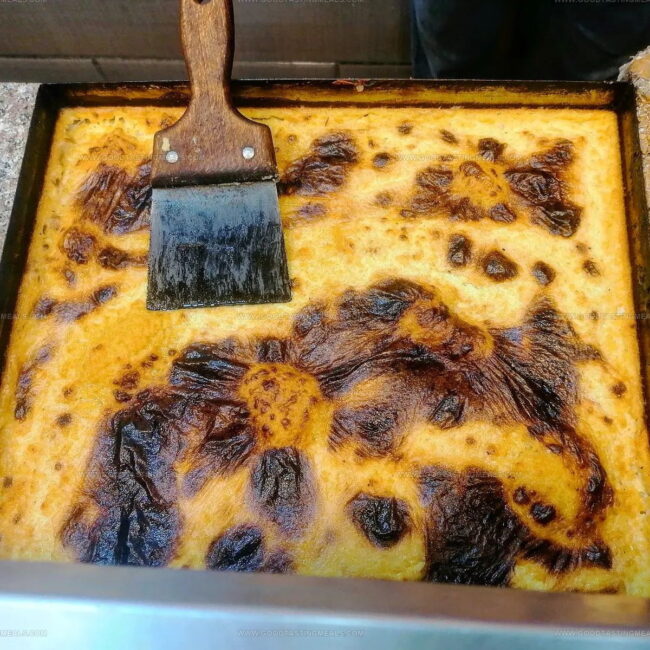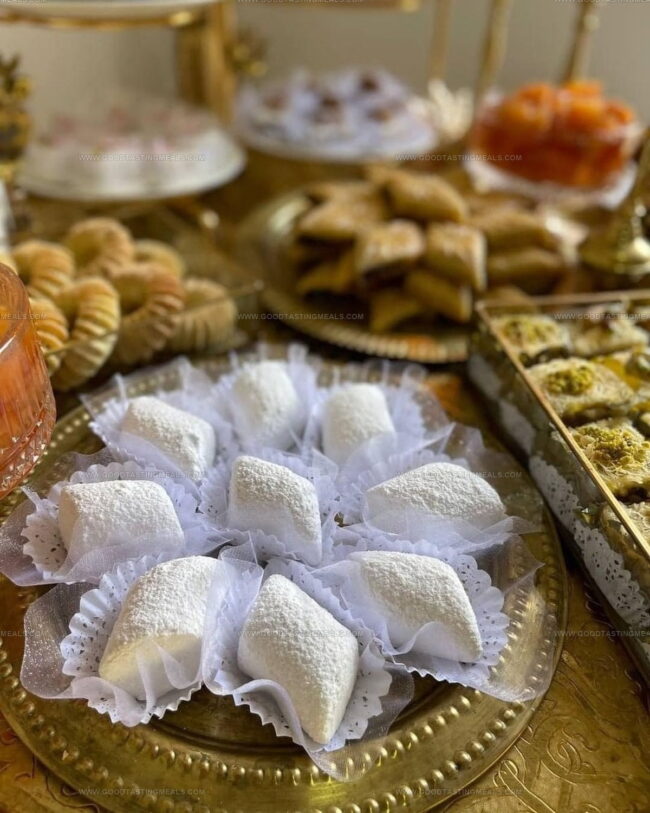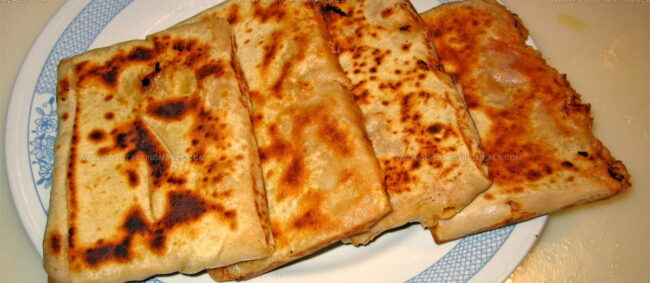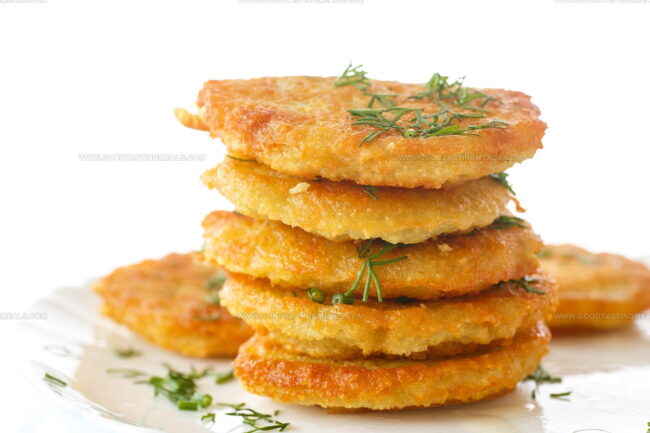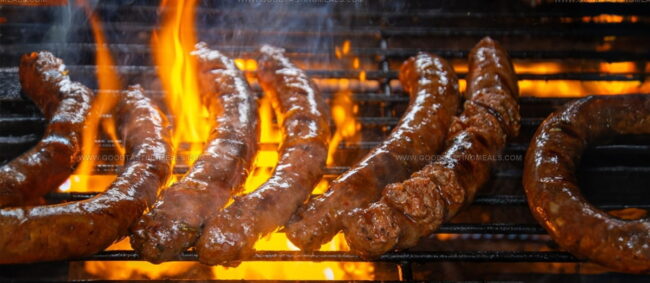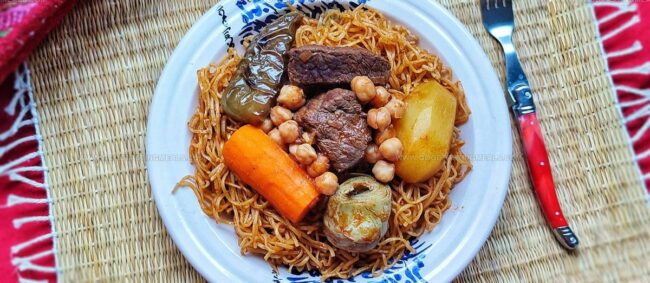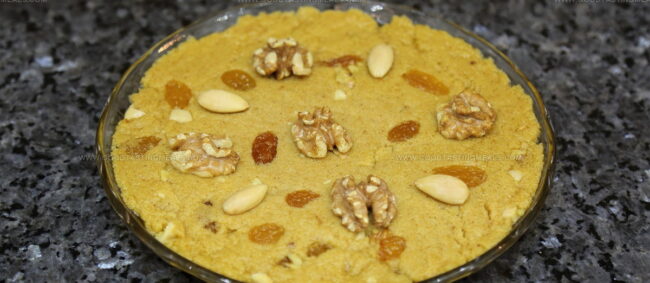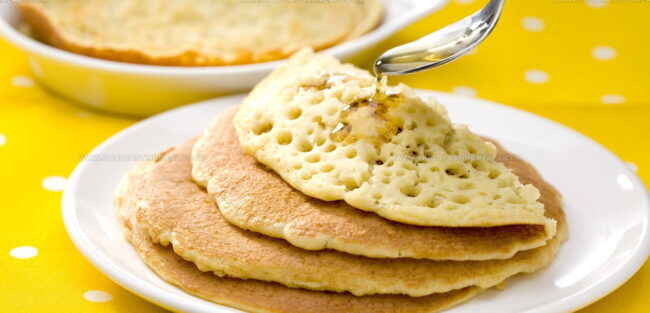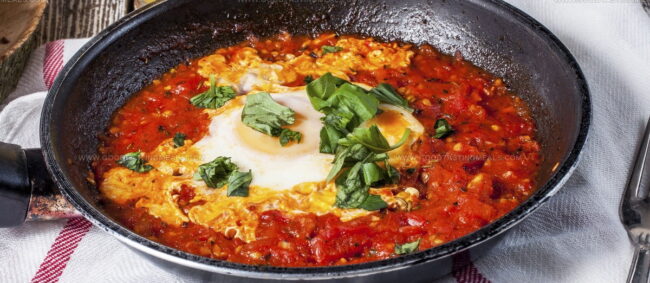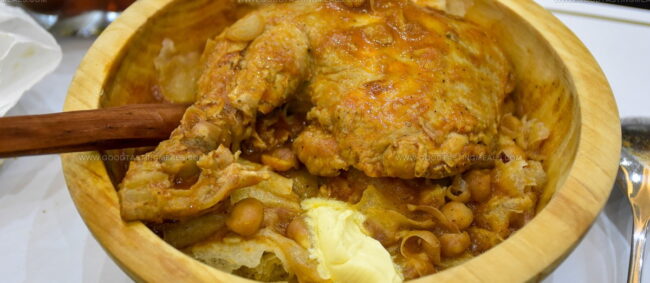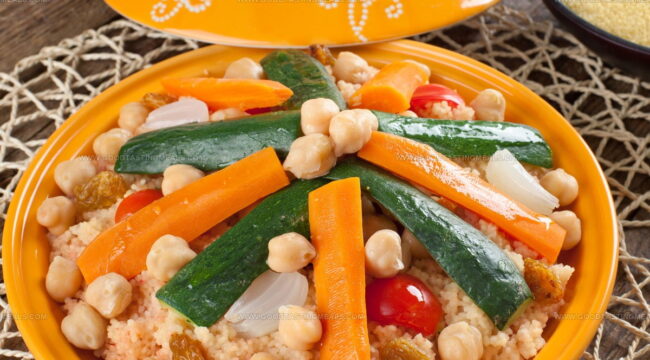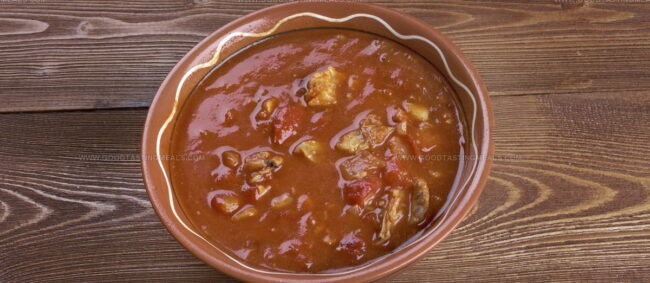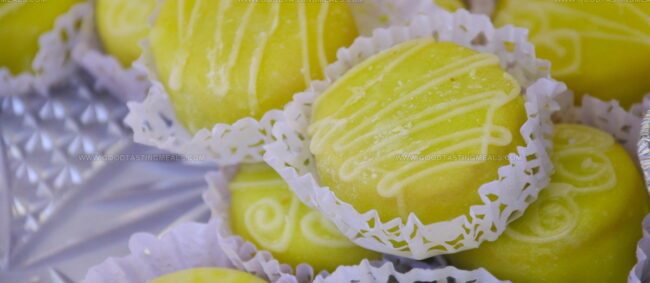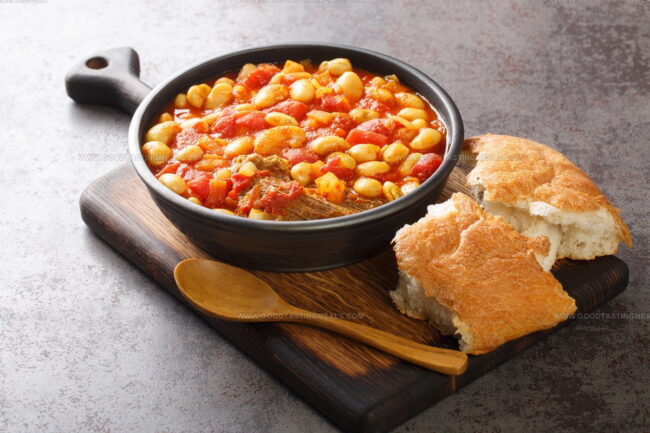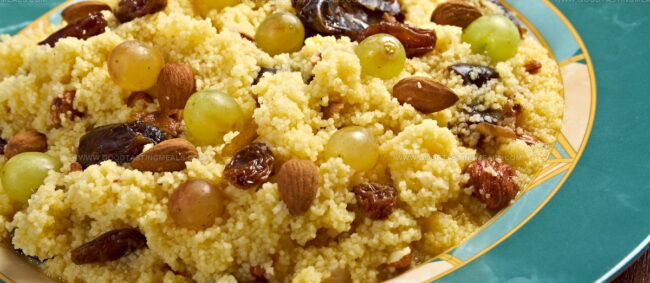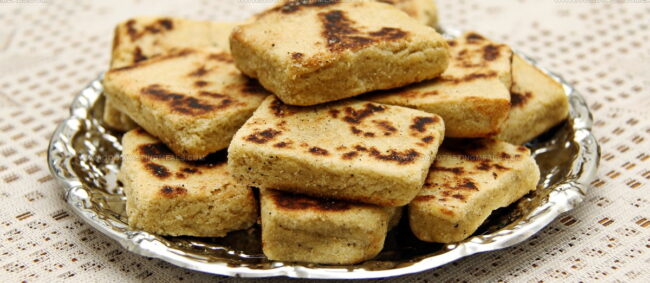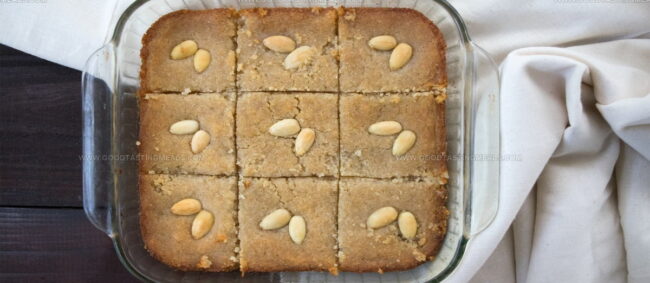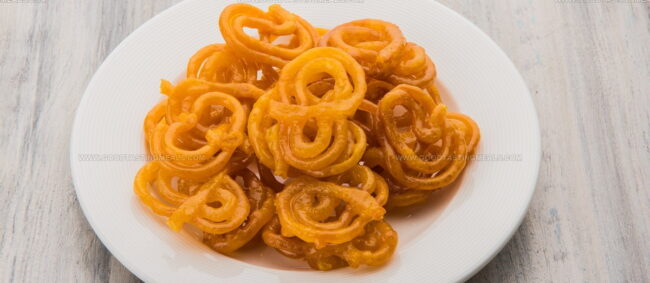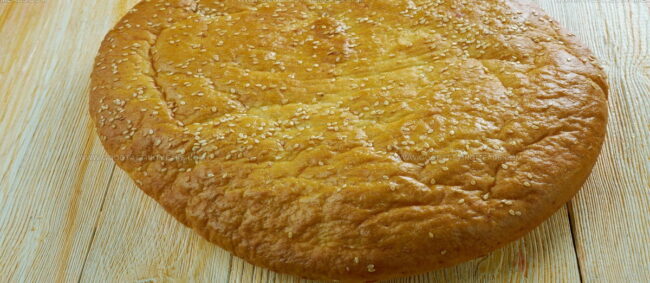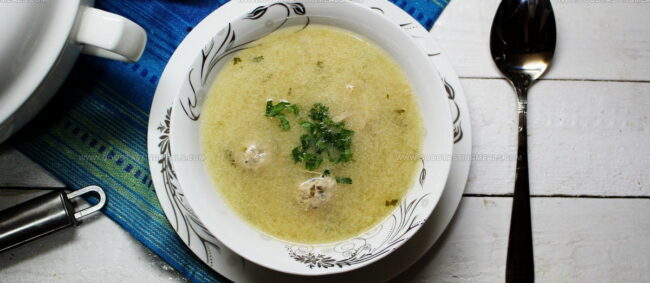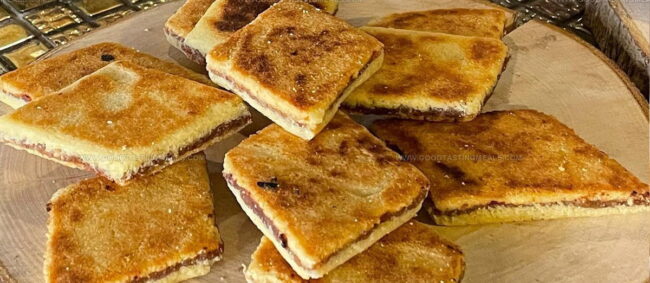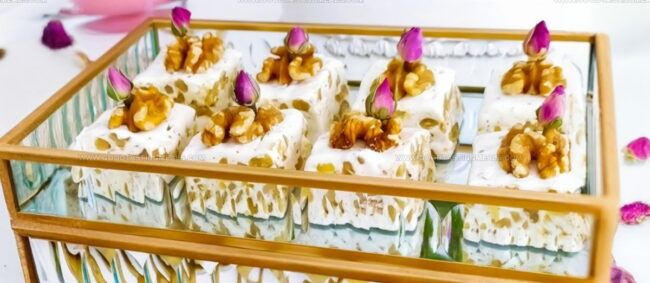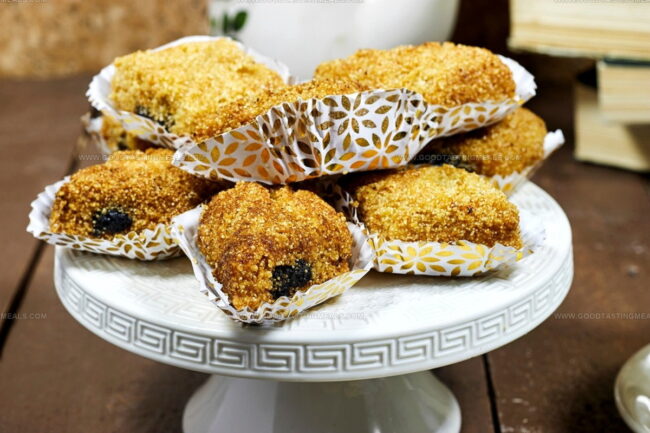32 Flavorful Traditional Algerian Foods to Discover
Traditional Algerian foods represent a rich culinary tapestry woven from Mediterranean, Berber, and Arabic influences.
Cultural connections burst through every delectable bite of these time-honored recipes.
Generations have preserved unique cooking techniques passed down through family kitchens and local communities.
Aromatic spices and fresh ingredients transform simple meals into extraordinary sensory experiences.
Regional diversity plays a significant role in shaping the distinctive flavors and cooking styles across different Algerian landscapes.
Each dish tells a compelling story of heritage, migration, and cultural exchange.
These gastronomic treasures reflect the country's complex historical interactions and geographic nuances.
Here are 32 traditional Algerian foods that will transport you through a flavorful cultural journey:
Traditional Algerian Foods with North African Flair
The flavors of Algeria are shaped by deserts, mountains, and the sea. Traditional dishes blend local spices and ingredients into meals that feel both exotic and deeply comforting.
Garantita
Garantita is a beloved Algerian street food cake crafted from chickpea flour, embodying North African culinary simplicity with its rich flavor and straightforward preparation.
Spanish influences shape its origins, with the name likely deriving from "caliantetorta" and reflecting cultural crossroads.
Bakers mix chickpea flour, oil, spices, and water to create its distinctive base mixture.
Beaten eggs coat the surface before baking transforms the batter into a golden-brown delicacy.
Street vendors and home kitchens across Algeria serve garantita piping hot, often accompanied by spicy harissa and earthy cumin.
Harissa's fiery notes complement the cake's mild chickpea foundation.
Garantita represents more than food - it symbolizes community connection through shared street fare.
Makroud El Louse
Makroud el louse are traditional Algerian almond cookies that melt instantly in your mouth with their delicate, flour-free texture.
Crafted from ground almonds, eggs, and sugar, these sweet treats feature a subtle orange flower water essence that elevates their flavor profile.
Bakers carefully mix the simple ingredients and shape the cookies before baking them to a light golden brown.
Powdered sugar coats each cookie, creating a soft, elegant finish that adds a sweet layer of sweetness.
Algerians often serve makroud el louse alongside hot tea or coffee for a perfect afternoon snack.
These cookies originated in North African cuisine as a gluten-free dessert option.
Their rich almond base provides a satisfying nutty flavor that lingers on the palate.
Makroud el louse represent a classic example of simple yet sophisticated Algerian baking traditions.
Mahjouba
Mahjouba are flaky semolina flatbreads beloved across North African streets as quick, satisfying handheld meals.
Originating in Algeria, these thick crepe-like breads feature a savory filling of caramelized onions and fresh tomatoes folded inside golden-brown layers.
Street vendors expertly prepare mahjouba by hand, spreading thin semolina dough and carefully layering ingredients before pan-frying to crispy perfection.
Spicy harissa sauce frequently accompanies the flatbread, adding an optional kick of heat.
Affordable and filling, mahjouba serve as a popular breakfast or light lunch option for workers and travelers.
Semolina's nutty flavor and the bread's simple preparation make mahjouba a classic street food staple.
Khfaf
Sfenj are deep-fried Moroccan and Algerian doughnuts crafted from sticky unleavened batter, featuring a distinctive golden crispy exterior and fluffy, tender interior.
Street vendors across North Africa sell these ring-shaped fritters hot and fresh, often dusted with sweet powdered sugar.
Moroccan families traditionally prepare sfenj as a casual breakfast or street snack, enjoying their simple yet satisfying texture.
Closely related to Libyan sfinz and Tunisian bambalouni, these fritters share similar preparation methods and regional culinary traditions.
Salt and semolina flour typically form the basic ingredient base for authentic sfenj dough.
Skilled bakers carefully hand-shape the rings before immersing them in hot oil.
Each fritter requires precise frying technique to achieve perfect crispness.
Moroccan communities consider sfenj a beloved comfort food connected to generations of street food culture.
Maaqouda
Maakouda are crispy potato fritters beloved across North African regions like Morocco, Algeria, and Tunisia, featuring deep-fried potato disks packed with robust flavors.
Boiled potatoes get mashed and blended with garlic, parsley, flour, salt, and pepper before being shaped into small rounds.
Street vendors often sell these golden-brown fritters in long sandwich rolls with zesty harissa and fresh lemon juice.
Simple ingredients transform into a popular snack that works as an appetizer or side dish.
Coriander adds extra brightness to the fritter's flavor profile.
Meat, tuna, or cheese fillings occasionally enhance the basic recipe.
Traditional preparation methods ensure maximum crispiness through deep-frying in hot oil.
Mediterranean culinary traditions shine through this versatile, satisfying street food.
Msemen
M'semen are layered, buttery Moroccan flatbreads renowned for their crispy exterior and soft, chewy interior.
Originating in North African cuisine, these breads combine flour, semolina, sugar, salt, yeast, warm water, oil, and clarified butter into a complex texture.
Skilled bakers knead the dough until smooth, then flatten and fold it into delicate square shapes.
Griddle-cooked or pan-fried, m'semen develop a golden-brown crispness that contrasts with their tender center.
Moroccans typically enjoy these breads alongside coffee or tea as a simple breakfast or snack.
Street vendors and home kitchens frequently prepare m'semen as a versatile staple.
Adventurous eaters can also find versions stuffed with savory meats and vegetables.
M'semen reflect Morocco's rich culinary traditions, blending technique and flavor into a single, satisfying bread.
Merguez
Merguez sausages burst with fiery North African flavor, featuring ground lamb or beef seasoned with intense spices like paprika, chili pepper, and harissa.
These crimson-red sausages originated in Algeria, Tunisia, and Morocco, quickly becoming a staple in regional cuisine.
Traditional recipes blend lamb and beef with aromatic seasonings including cumin, garlic, coriander, and sumac.
Lamb casings hold the spicy mixture, allowing versatile cooking methods like grilling and pan-frying.
French cuisine has enthusiastically adopted merguez, spreading its popularity beyond North Africa.
Street vendors and family kitchens alike celebrate merguez as a bold, flavorful protein.
Rechta
Rechta are traditional Algerian wheat noodles served with a rich chicken sauce that celebrates North African culinary heritage.
Originating in Algeria, these thin and flat noodles symbolize festive gatherings during significant events like weddings and religious celebrations.
Wheat flour, salt, and water form the base of handmade noodles carefully stretched and cut into delicate strips.
Chicken sauce (marga) combines tender meat with aromatic spices including ras el hanout, cinnamon, and garlic.
Vegetables like chickpeas, turnips, potatoes, and zucchini enhance the sauce's complexity and nutritional value.
Cooks prepare the noodles separately and generously ladle the fragrant sauce over them before serving.
Family members often gather around shared platters during special occasions to enjoy this comforting dish.
Lham Lahlou
Lham lahlou represents a traditional Algerian lamb stew simmered in a sweet syrupy sauce packed with seasonal fruits and warming spices.
Prepared specifically during Ramadan, this complex dish serves as an essential energy-boosting meal for breaking daily fasts.
Tender lamb pieces absorb rich flavors from cinnamon and star anise, creating a balanced sweet-savory profile.
Prunes, quince, apples, pears, apricots, and raisins contribute natural sweetness and depth to the recipe.
Slow-cooked methods ensure meat becomes exceptionally tender and infused with aromatic spices.
Mediterranean culinary techniques transform simple ingredients into a sophisticated dining experience.
Algerian families traditionally serve this dish during special religious celebrations and gatherings.
Sweet and savory elements make lham lahlou a unique gastronomic preparation that reflects regional cooking traditions.
Tamina
Tamina represents a cherished Algerian dessert blending toasted semolina, melted butter, and golden honey into a rich, sweet delicacy.
Families traditionally prepare this symbolic treat during child birth celebrations, marking significant life moments with its unique texture and flavor.
Small plates showcase the dessert, allowing guests to share its warmth and cultural significance.
Ground semolina creates a smooth base that absorbs butter and honey perfectly.
Cinnamon or sugared almonds often garnish the top, adding subtle crunch and visual appeal.
Modest portions encourage communal eating and connection.
Soft spoonfuls reveal layers of nutty, sweet complexity.
Algeria's culinary heritage shines through this simple yet meaningful dessert.
Baghrir
Baghrir are delicate Moroccan and Algerian pancakes distinguished by their signature honeycomb-like surface of tiny, perfectly formed bubbles created during cooking.
Semolina flour gives these tender pancakes their unique texture and light, airy consistency.
Yeast plays a crucial role in developing the distinctive holes that make baghrir instantly recognizable.
Home cooks typically prepare these pancakes by cooking them on one side until the surface is completely covered with small, evenly spaced bubbles.
Traditional serving methods involve drizzling warm honey or butter over the pancake, enhancing its soft, spongy texture.
North African families often enjoy baghrir as a sweet breakfast or afternoon snack.
Moroccan and Algerian households consider these pancakes a beloved comfort food passed through generations.
Baghrir represent a simple yet elegant culinary tradition that connects communities through shared meals.
Shakshouka
Shakshouka is a vibrant North African egg dish featuring poached eggs nestled in a spicy tomato sauce that originated in Tunisia.
Merguez sausage often enhances its robust flavor profile while traditional preparations vary across regions like Egypt and Israel.
Skilled cooks prepare this one-skillet meal by sautéing onions and tomatoes with aromatic spices until a rich sauce develops.
Mediterranean kitchens commonly serve the dish with accompaniments like feta cheese or fresh bread.
Israeli versions frequently add salty cheese on top for extra complexity.
Middle Eastern restaurants widely feature this simple yet flavorful breakfast or brunch option.
Home cooks appreciate its quick preparation and satisfying taste that easily transforms basic ingredients into a memorable meal.
Chakhchoukha
Chakhchoukha are traditional Algerian shredded flatbread pieces layered with a rich, spice-infused lamb stew originating from Algeria's Constantine region.
Mountain communities developed this hearty dish as a resourceful way to transform leftover bread into a complete meal.
Rough flatbread called rougag gets torn into small pieces and generously covered with marqa, a complex stew featuring tender lamb chunks.
Spices like cumin, ras el hanout, caraway, and red chili peppers create deep, warming flavors in the stew.
Chickpeas and tomatoes add texture and richness to the dish.
Home cooks typically prepare chakhchoukha during family gatherings and special occasions.
Algerian families often serve this comforting meal as a communal dining experience.
Couscous (Dish)
Couscous are tiny semolina grains steamed to perfection, forming a pyramid-like presentation that symbolizes North African culinary tradition in Morocco and Algeria.
Moroccan families traditionally prepare this dish on Fridays as their most significant weekly meal, using a special metal steamer called acouscoussier.
Semolina flour transforms into small pellets through careful water sprinkling and sieving, creating uniform grains with unique texture.
Versatile preparations range from savory seven-vegetable versions to sweet variations with chickpeas and lamb or spicy chili pepper combinations.
Berber-style editions incorporate chicken, milk, and turnips, while fish versions feature fennel and wild turnips.
Cooks serve couscous topped with meat or fish and vegetables, accompanying the dish with rich broth on the side.
Dessert versions even exist, enhanced with butter, cinnamon, and sugar, demonstrating the grain's remarkable culinary flexibility.
Harira
Harira is a velvety-smooth Moroccan soup symbolizing community unity during Ramadan, traditionally prepared with rich tomato broth and aromatic herbs.
Originating in North Africa, this nourishing soup represents spiritual connection and social gathering at sunset when Muslims break their daily fast.
Muslim families eagerly await the cannon's signal to consume this hearty soup accompanied by sweet chebakia cookies and dates.
Moroccan cooks often enhance harira's texture by whisking beaten eggs or flour-water mixtures into the broth.
Algerian communities also embrace this beloved soup as a staple during religious celebrations.
Arabic roots reveal harira's name means "velvetiness," reflecting its silky consistency.
Generations have shared this comforting soup as a symbol of warmth, hospitality, and shared cultural experience.
Chorba Frik
Chorba frik is a hearty Algerian soup that blends ancient freekeh grain with rich tomato broth, meat, and chickpeas.
Mediterranean culinary traditions shape this robust soup's distinctive green-hued freekeh, which gives the dish its unique character and texture.
Algerian families prepare chorba frik with tender lamb or beef, creating a deeply satisfying meal during ramadan and cold winter months.
Aromatic spices like mint and coriander infuse the soup with complex, warm flavors that reflect North African cooking techniques.
Traditional preparation involves slow-cooking ingredients to develop deep, layered tastes.
Freekeh, an ancient roasted green wheat, provides nutritional density and a smoky undertone to the broth.
Home cooks often serve chorba frik with fresh bread, making it a complete and comforting meal.
Mkhabez
Mkhabez are traditional Algerian pastries celebrating special occasions with intricate designs and delicate flavors.
Almond-based pastries showcase exceptional creativity through their elaborate decorations and unique shapes.
Ground almonds form the base, complemented by sugar, eggs, and flavors like lemon zest, rose water, or vanilla.
Traditional triangular pastries originally featured blue, pink, or white royal icing, while modern versions embrace diverse decorative styles.
Bakers carefully craft these sweet treats by first creating a nut-based dough and then meticulously adorning them with ornate icing patterns.
Pistachios and walnuts sometimes replace almonds, offering variation in texture and taste.
Simple ingredients transform into elegant desserts that symbolize Algerian culinary artistry.
Each mkhabez reflects personal creativity and cultural celebration through its intricate presentation.
Kesra
Kesra orkhobz f'tir serves as a staple Algerian flatbread crafted from simple semolina ingredients.
Moroccans and Algerians prepare this unleavened bread without yeast, creating a unique cooking method.
Semolina, oil, salt, and water form its basic composition, which distinguishes it from other regional breads.
Skilled bakers cook kesra directly on a hot tagine or stovetop surface instead of traditional baking.
North African households commonly serve kesra as a daily bread accompaniment to meals.
Home cooks typically shape the dough into round, flat discs before cooking.
Women often pass down specific preparation techniques through generations, maintaining traditional bread-making practices.
Loubia
Loubia blends rich North African culinary traditions with simple, hearty ingredients that transform humble white beans into a robust meal.
Moroccan, Tunisian, Algerian, and Libyan families prepare this comforting stew by slowly simmering white beans in a zesty tomato-based sauce packed with aromatic spices.
Garlic, cumin, and paprika infuse the dish with warm, deep notes that complement the creamy beans.
Home cooks often serve loubia with freshly baked flatbread for scooping up the thick, savory sauce.
Mediterranean influences shine through in its balanced seasoning and slow-cooking technique.
Nutritious and filling, loubia provides substantial protein and satisfies hunger with its deep, layered flavors.
Street vendors and home kitchens alike celebrate this classic bean stew as a staple of North African cuisine.
Mesfouf
Mesfouf stands out as a versatile Algerian couscous dish featuring finely ground semolina mixed with butter and prepared in both sweet and savory variations.
Sweet versions often include raisins, dates, and powdered sugar, creating a delightful dessert-like experience.
Savory preparations might incorporate vegetables, herbs, and spices for a more robust flavor profile.
North African households traditionally serve mesfouf as a side dish or light meal, showcasing its cultural significance.
Regional differences influence ingredient selections, with some families adding almonds or orange blossom water for extra complexity.
Each preparation reflects personal family traditions and local culinary preferences.
Semolina serves as the core ingredient, determining the dish's unique texture and taste.
Salt and butter enhance the overall flavor, making mesfouf a satisfying and adaptable couscous creation.
Mbesses
Mbesses are traditional Algerian sweet cakes bursting with rich Middle Eastern dessert flavors and textures.
Semolina or farina forms the cake's primary base, blended smoothly with eggs and yeast for a soft, pillowy consistency.
Milk, sugar, honey, and butter combine to create a luxurious batter that transforms into a golden-brown delicacy.
Bakers carefully mix the ingredients to achieve a perfect balance of sweetness and density.
Pistachios and almonds adorn the cake's surface, adding crunch and nutty depth to each bite.
Sweet syrup made from sugar, honey, water, orange juice, and rose essence gets generously drizzled over the warm cake.
Rose essence provides a delicate floral note that elevates the dessert's complexity.
Mbesses represent Algeria's rich culinary heritage, offering a genuine taste of North African baking traditions.
Kalb-El-Louz
Kalb-el-louz is a treasured Algerian sweet pastry packed with ground almonds and semolina that creates a rich, moist dessert signature to North African cuisine.
This traditional treat originates from Algeria's deep culinary heritage and showcases complex flavor profiles through its carefully blended ingredients.
Almonds provide a nutty base that gives the pastry its distinctive texture and warmth.
Cardamom, cinnamon, and orange blossom water infuse each bite with aromatic spices that elevate the dessert's sensory experience.
Bakers carefully combine semolina flour with ground almonds to create a tender, crumbly base before baking the pastry to golden perfection.
After baking, the pastry receives a generous coating of sweet syrup that enhances its moisture and adds intense sweetness.
Home bakers and professional pastry makers across Algeria prepare this dessert for special occasions and family gatherings.
Zalabia
Zulbia is a golden, crispy spiral-shaped dessert originating from Persia and beloved across Middle Eastern and Asian cultures.
Persian and Indian cooks craft this sweet treat by mixing flour, yogurt, and baking soda into a thin batter that gets piped in intricate circular patterns directly into hot oil.
Each deep-fried strand transforms into a crunchy, lace-like spiral that absorbs sweet syrup made with rosewater, honey, or cardamom.
Skilled artisans carefully drizzle the batter to create perfect golden swirls that become crisp and light when fried.
Traditional preparations often include sprinkling chopped pistachios or saffron threads over the finished dessert.
Special occasions like religious festivals frequently feature zulbia as a celebratory sweet.
Rich cultural significance accompanies this delicate dessert that connects generations through its complex preparation.
During celebrations, families gather to enjoy these complex, syrup-soaked treats that symbolize joy and community.
Khobz El Dar
Khobz el dar represents a traditional North African bread originating from Algeria and Morocco that requires zero kneading.
Semolina flour serves as its primary ingredient, creating a distinctive texture and mild sweetness through a simple mixing process.
Home bakers appreciate this bread for its effortless preparation, combining semolina, salt, sugar, yeast, oil, eggs, and milk into a quick dough.
Sesame seeds often garnish the bread's surface, adding visual appeal and nutty flavor.
Baking transforms the mixture into a soft, tender bread with a golden-brown exterior.
Families frequently enjoy khobz el dar as a breakfast staple or accompaniment to meals.
Home kitchens across North Africa regularly feature this uncomplicated bread recipe.
Chorba Beida
Chorba beida embodies Algeria's comforting soup heritage, blending tender chicken with aromatic spices in a nourishing broth traditionally prepared during Ramadan.
Mediterranean culinary traditions shine through its simple yet flavorful ingredients, including succulent chicken pieces, soft chickpeas, and fragrant cinnamon.
Onions, carrots, and celery create a robust base that deepens the soup's complex flavor profile.
Garlic and butter enhance the overall richness, transforming basic ingredients into a warming meal.
Home cooks carefully brown chicken before adding vegetables, ensuring each ingredient contributes maximum taste.
Fresh herbs often garnish the soup, adding a final layer of freshness.
Families and friends gather around steaming bowls, sharing this meaningful Algerian comfort food.
Rougag
Rougag is a rustic North African flatbread celebrated for its simplicity and versatile cooking method using semolina and wheat flour dough.
Originating in Algeria and Tunisia, this bread spreads across North African cuisines with regional variations.
Traditional preparation involves cooking the dough on a tajine or cast-iron skillet, creating a unique texture and flavor profile.
Home cooks carefully knead and shape the dough by hand, ensuring each flatbread maintains an authentic character.
Semolina provides a distinct grainy texture that sets rougag apart from other regional breads.
Wheat flour contributes to its soft yet sturdy consistency, making it ideal for accompanying stews, tagines, and grilled meats.
Algerian and Tunisian families often serve rougag as a staple side dish during meals.
Mediterranean culinary traditions embrace this bread as a symbol of comfort and shared dining experiences.
Traditional Kemariya Cheese (Takemmarit)
Kemariya is a traditional Algerian white cheese originating from the indigenous Wilaya community, handcrafted through ancient techniques using goat, cow, or camel milk.
Southern Algerian women prepare this smooth, round cheese by heating raw milk with salt and carefully coagulating the mixture over 24 hours.
Berbers know the cheese as takkmerit, reflecting its deep cultural roots in the region.
Rural communities craft kemariya using time-honored methods passed down through generations.
Salt and precise temperature control are critical to achieving its distinctive texture and flavor.
Religious celebrations like Ramadan often feature this special cheese, which locals typically enjoy with bread or tea.
Families cherish kemariya as a symbolic representation of their culinary heritage.
Nomadic traditions and local agricultural practices contribute to its unique production process.
Bradj
Bradj stands as a cherished Algerian pastry diamond crafted from semolina dough layers and filled with sweet date paste.
Originating in northeastern Algeria's Constantinois, Jijel, Bibans, and Kabylie regions, this traditional treat reflects local culinary heritage.
Skilled bakers carefully shape the pastry into distinctive geometric diamond forms.
Two layers of kesra (semolina dough) encase a rich, smooth date filling called ghers.
Home cooks and bakeries prepare bradj during special occasions and celebrations.
Families pass down recipes through generations, maintaining the pastry's cultural significance.
This unique dessert offers a perfect balance of textures and sweet, earthy flavors.
Traditional Bouhezza Cheese
Bouhezza is a traditional Algerian mountain cheese originating from Chaouia community's ancestral dairy practices, carefully crafted from raw goat, sheep, or cow milk blended with fermented lben and salt.
Mountain shepherds developed this unique cheese between March and June using traditional techniques that transform simple milk into a complex, spreadable delicacy.
Small-batch production involves fermenting milk in cloth bags, allowing natural aging processes to develop its distinctive flavor profile.
Ripening takes several weeks to months, creating a medium-consistency cheese with subtle saltiness and slight spiciness.
Red chili powder occasionally enhances its tangy character, giving bouhezza an intense lactic aroma.
Rural Algerian families typically enjoy this cheese fresh, crushed, or dehydrated alongside bread.
Regional mountain communities consider bouhezza a staple dairy product that connects generations through shared culinary heritage.
Shepherds' time-honored techniques ensure each batch maintains authentic flavor and cultural significance.
Creponne
Creponne is a refreshing Algerian dessert blending zesty lemon flavor with silky egg whites and sugar syrup.
Gilbert Soriano invented this unique frozen treat at Cremerie l'Oranaise in Oran.
Lemon zest and juice form the base of this delicate sorbet.
Boiling sugar syrup adds sweetness and smooth texture to the mixture.
Freezing helps develop intense citrus notes and creates a light, airy consistency.
Whipped egg whites contribute a creamy, soft dimension to the sorbet.
Home cooks carefully mix ingredients to achieve perfect balance.
Serving chilled, this dessert offers a cool, tangy escape from warm Algerian days.
Jawzia
Jawzia are sweet Algerian nougat confections crafted in Constantine with carefully toasted walnuts suspended in a glossy honey-based mixture.
Skilled artisans blend premium walnuts, pure honey, egg whites, and subtle vanilla extract to create this delicate treat.
Nutty and rich, jawzia showcase Algeria's traditional dessert craftsmanship with elegant simplicity.
Each piece delivers a smooth, golden texture that melts softly on you.
Regional bakers have perfected this recipe through generations of careful preparation.
Nuts provide a satisfying crunch against the silky honey base.
Vanilla adds a gentle aromatic depth to the confection.
Jawzia represent a delightful glimpse into Algerian sweet-making traditions.
Mousse Jawzia
Mousse jawzia is a luxurious Algerian dessert featuring whipped meringue that transforms simple ingredients into an elegant treat originally reserved for nobility in Constantine.
Walnuts provide a rich crunch against the airy egg white base, creating a delicate texture that balances sweet and nutty flavors.
Honey serves as the primary sweetener, carefully heated to achieve a smooth liquid state before blending with the meringue.
Skilled bakers whip egg whites to a stiff peak, ensuring the mousse maintains its light, cloud-like consistency.
Salt subtly enhances the dessert's complex flavor profile, cutting through the sweetness.
Traditional preparation requires precise technique and careful ingredient selection.
Generations of Algerian families have passed down this sophisticated dessert recipe.
Which Algerian Foods Are Commonly Served During Ramadan?
During Ramadan, Algerian cuisine offers a variety of traditional dishes that nourish and celebrate the breaking of the fast, combining hearty ingredients and rich flavors:
These dishes reflect Algerian hospitality and the importance of family gatherings during Ramadan.

